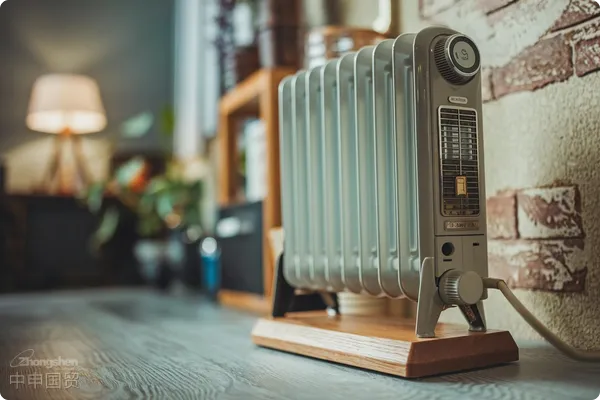- Shanghai Zhongshen International Trade Co., Ltd. - Two decades of trade agency expertise.
- Service Hotline: 139 1787 2118
The full name of an electric heater is an electrical space heater, which is a device that converts electrical energy into thermal energy, primarily used for heating in living or working spaces. The working principle of an electric heater involves heating air through electric heating tubes, creating convective heating to achieve the desired warming effect. For export enterprises, the export of electric heaters requires standardized declarations and attention to the technical requirements of importing countries and potential quality risks. This article will provide a detailed explanation of the export process and considerations for electric heaters.

Countermeasures:
When exporting electric heaters, enterprises need to declare to customs through China's International Trade "Single Window" and select the appropriate commodity code based on the different types of electric heaters. Below are the key points for standardized declaration of electric heaters:
Export Classification
The classification of electric heaters depends on their working methods and must be accurately assigned to the corresponding tariff codes, including:
- 85162920: Radiant space heaters
- 85162931: Fan-type convective space heaters
- 85162932: Liquid-filled convective space heaters
- 85162939: Other convective space heaters
- 85162990: Other electrical space heaters
The specific working method, such as fan-type, liquid-filled, or radiant, should be clearly indicated in the prefix of the commodity name to ensure correct classification.
Standard Declaration Elements
During declaration, enterprises need to provide detailed product information, including:
- Product Name: Such as "fan-type electric heater", "liquid-filled electric heater", etc.
- Brand(Chinese or foreign name): Brand information must be complete and accurate.
- Model: Provide specific model numbers to clearly identify the product.
- Purpose: Such as "for heating in residential or office environments".
- Working Method: Such as "heating air through a fan" or "dissipating heat through a liquid medium."
II. Technical Requirements of Importing Countries
Different countries have varying quality and safety standard requirements for imported products. Enterprises should fully understand the regulations and standards of target countries to ensure exported products comply with relevant requirements.
Technical Requirements for the EU Market
- CE Certification: Electric heaters exported to the EU market require CE certification to prove compliance with EU health, safety, and environmental standards. CE certification involves testing for safety standards, electromagnetic compatibility (EMC) standards, as well as standards for electromagnetic harmonic current emission and voltage fluctuation control.
- Environmental protection requirements: The power plug of the electric heater must comply with relevant standards, such as the requirements for "non-rewirable two-pole flat plugs for household equipment connections."
Technical Requirements for the North American Market
- FCC certification: Electric heaters exported to North American markets such as the US and Canada require FCC certification to ensure the devices electromagnetic compatibility performance meets requirements and avoids interference with other electronic devices.
- UL certification: Although UL certification is not mandatory, it is highly recognized in the North American market. It covers safety performance evaluations of electric heaters and is one of the passports to the North American market.

III. Common Quality and Safety Risk Points
Electric heaters are high-power appliances that pose potential risks of electric shock, burns, overheating, and even fire during use. In recent years, common quality issue notifications for electric heaters in the EU and US markets have focused on the following aspects:
- Lack of Overheat Protection Device: Some electric heaters lack effective overheat protection, leading to excessive temperatures that may cause fires or burn accidents.
- Insufficient Heat Resistance of Materials: Some non-metallic materials fail to meet heat resistance standards and may deform or melt at high temperatures, exposing live parts of the device and increasing the risk of electric shock.
- Power Cord and Plug Issues: Insufficient power cord specifications may not meet the devices load requirements, causing the power cord to overheat and posing risks of burns or fire.
Enterprises should strictly control product quality before export and ensure compliance with the relevant regulations and standards of the destination country to avoid export disruptions due to quality issues.
IV. Operational Process and Considerations for Exporting Electric Heaters
During the electric heater export process,Export RepresentationCompanies can assist enterprises in handling various tasks from document preparation to actual transportation. The following is a simplified introduction to the specific operational process of export agency companies from the customers perspective:
- Payment Arrangement
The customer transfers the payment to the export agency companys account, and the agency company confirms receipt of the payment. - Payment Processing and Booking Shipment
The agency company deducts the agency fee from the payment and transfers the remaining amount to the manufacturing factory, while arranging booking and cargo transportation to ensure smooth shipment. - Document Preparation and Delivery
The agency company prepares and produces the necessary documents for export, such as invoices and packing lists, according to the contract terms, and delivers these documents to the client for customs declaration and cargo pickup. - Goods Export and Customs Clearance
The agency company assists in handlingExport Clearancethe procedures, arranges the shipment of goods, and provides necessary customs clearance support upon the goods arrival at the destination to ensure smooth delivery to the client. - FX Settlement AgencySettlement
After the payment is received, the agency company conducts foreign exchange settlement, converts the foreign currency into RMB, and completes the subsequent financial settlement.
V. Summary
The export of electric heaters involves product quality, certification requirements, and international market access regulations. During the export process, enterprises must ensure their products comply with the technical standards and environmental requirements of the target market and complete export operations through professional export agency companies to effectively reduce export risks. Export agency companies not only assist enterprises in completing customs clearance and logistics but also provide end-to-end support from quotation to document preparation, ensuring smooth export operations.
Related Recommendations
? 2025. All Rights Reserved. Shanghai ICP No. 2023007705-2  PSB Record: Shanghai No.31011502009912
PSB Record: Shanghai No.31011502009912










